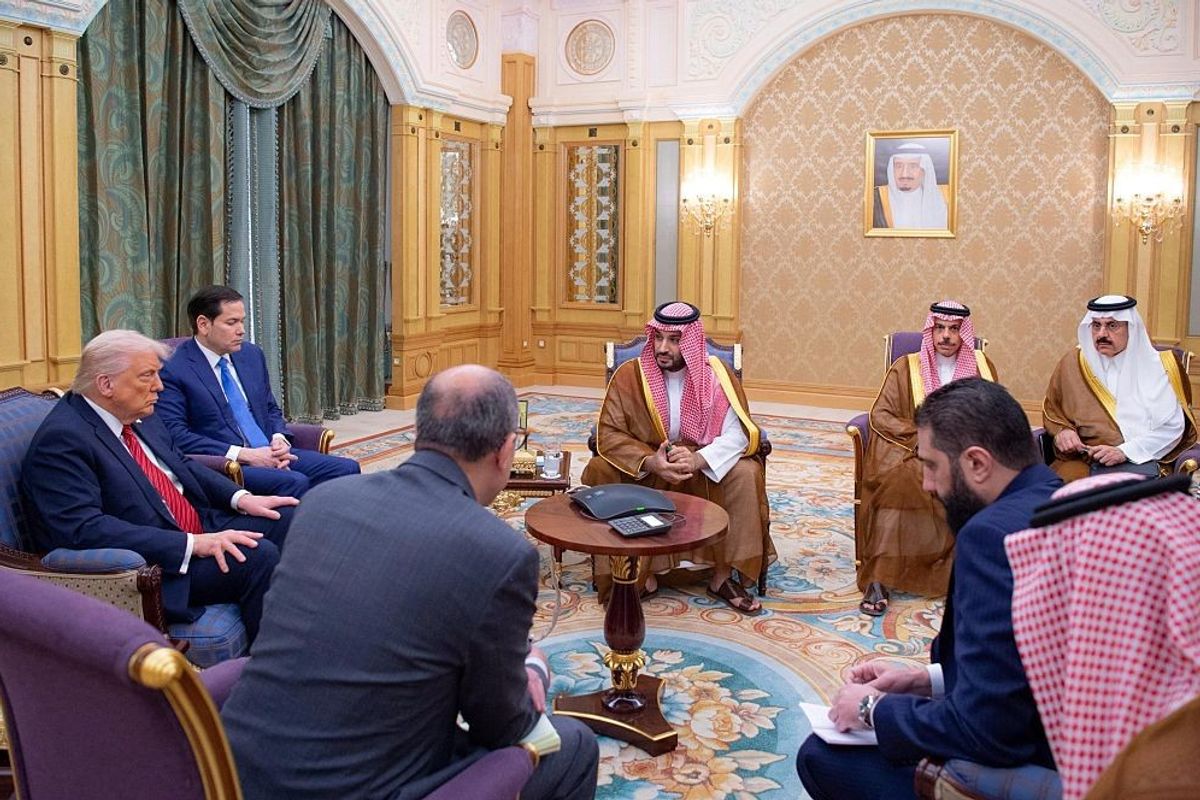While the U.S. remains focused on defeating ISIS in Syria and Iraq, al Qaeda in Syria is accumulating strength at an alarming pace and may eventually pose the most daunting counterterrorism challenge that the U.S. has ever faced.
“Al Qaeda has methodically enhanced its standing in Syria and finds itself in 2017 as arguably the most influential, explicitly anti-regime actor in the conflict,” explains Charles Lister, Senior Fellow at the Middle East Institute.
“This sustained increase in power has been achieved through a carefully managed strategy implemented by a central shura leadership that has clearly learned lessons from al Qaeda’s past and has set about operationalizing a more advanced level of strategic thinking that al Qaeda’s global strategists had begun debating in 2008-2009,” he says.
Al Qaeda’s Syrian offshoot developed in 2011 within the backdrop of Syria’s civil war. The group, then known as Jabhat al-Nusra or the al-Nusra Front, quickly emerged as one of the most potent rebel groups fighting Syrian President Bashar al-Assad. In January 2012, al-Nusra released its first video outlining its objectives, which included overthrowing Assad and instituting an Islamic government based on Sharia law in Syria.
The U.S. State Department designated al-Nusra as a terrorist organization in December 2012, listing al-Nusra amongst the aliases associated with al Qaeda in Iraq (AQI). In April 2013, AQI leader Abu Bakr al-Baghdadi attempted to merge al-Nusra into his new organization, the Islamic State in Syria (ISIS), but al-Nusra leader Abu Mohammed al-Julani rebuffed Baghdadi and instead publicly affirmed his allegiance to al Qaeda emir Ayman al-Zawahiri.
Al-Nusra continued to serve as al Qaeda’s official affiliate in Syria until last summer when Julani announced that his group was “splitting” from the al Qaeda network and rebranding itself as Jabhat Fateh el-Sham (JFS). “We declare the complete cancellation of all operations under the name of Jabhat al-Nusra, and the formation of a new group operating under the name ‘Jabhat Fateh al-Sham,’ noting that this new organization has no affiliation to any external entity,” Julani said.
Counterterrorism experts immediately dismissed the idea that a real separation had occurred, instead concluding that Julani’s purpose was to enable JFS to procure new partnerships and additional sources of financing from individuals or organizations hesitant to support an overt al Qaeda associate. Skeptics pointed out that a few months prior to Julani’s move, al Qaeda emir Ayman al-Zawahiri had issued a statement giving his blessing for al-Nusra to break away from al Qaeda and unite with other jihadi factions fighting in Syria. During his video announcement, Julani declared his reverence for Osama bin Laden and his intention to establish an Islamic state in Syria.
This January, JFS once again rebranded itself, this time as Hayat Tahrir al-Sham (HTS), the product of its merger with four smaller Syrian jihadist factions. Hashim al-Sheikh, also known as Abu Jabir, who had previously been the head of the rival Islamist rebel group Ahrar al-Sham, was named the new leader of HTS, and former JFS leader Julani was appointed the alliance’s general military commander.
According to Collin Clarke of the RAND corporation, al Qaeda’s latest rebranding was part of its strategy to expand its influence in Syria and bring additional jihadist factions under its control.
“The recent move by JFS to create Hayat Tahrir al Sham (HTS) is less a rebranding than an opportunistic attempt at expansion,” writes Clarke. “This has occurred while Ahrar al-Sham – HTS’ rival and a group the West views as more moderate – is divided and weakened and as other moderate Syrian rebels are no longer receiving aid from the United States, Turkey and Saudi Arabia, on grounds that that supplies could be co-opted by groups linked to al-Qaeda.”
Alternatively, according to Lister, the recent name change may have been meant to counter actions undertaken by rival rebel groups, most notably Ahrar al-Sham, and simultaneously reinforce al Qaeda’s position as the preeminent opposition force fighting Assad.
“HTS was formed by JFS as a protective measure amid a concerted move by Ahrar al-Sham to present itself as the protector of opposition groups facing attack by JFS,” argues Lister. “Ahrar al-Sham’s continued, very strong connections to Turkey, involvement in Euphrates Shield, consistent refusal to unite with al-Nusra and JFS, and recent gain of approximately 8,000 fighters was perceived as a serious threat to JFS’ prominence.”
Irrespective of the underlying motivations, HTS quickly asserted itself by claiming responsibility for a double suicide bomb attack near holy shrines in Syria’s capital city of Damascus in early March. The bombings killed more than 40 people and injured dozens of others. In a second HTS attack days later, at least 31 people and more than 100 were injured in two suicide bombs at Damascus’ main court complex.
Today, al Qaeda’s rising influence across Syria presents a dangerous conundrum for U.S. policymakers.
“The U.S. has very few options today, except for a large-scale land intervention in Idlib, which would be a terrible idea,” Lister says.
Yet with no end to the Syrian civil war in sight, taking steps to curb al Qaeda’s growing role in the Syrian opposition movement could pay substantial dividends down the road.
Bennett Seftel is deputy director of editorial at The Cipher Brief. Follow him on Twitter @BennettSeftel.














